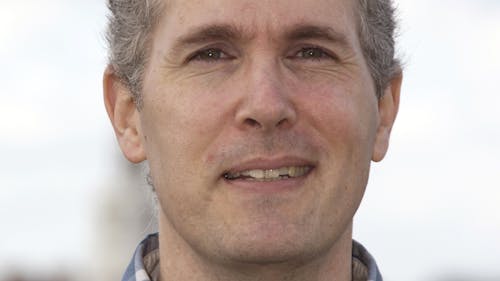University professors named fellows by AAAS

The American Association for the Advancement of Science has named two Rutgers professors as fellows, joining six other professors from the School of Arts and Sciences to receive the merit.
Robert Bartynski, a professor in the Department of Physics and Astronomy, leads the Bartynski Group, whose work focuses mainly on the electronic structure of nanoscale systems. Andrew Baker, an associate professor in the Department of Physics and Astronomy, focuses on the use of radio telescopes to understand galaxy evolution in the universe.
Bartynski was cited for his work in studying electronic states on surfaces and interfaces. His development of the Auger Photo-electron Coincidence Spectroscopy and Inverse Photoemission tools were also mentioned, according to a Rutgers news release.
Baker was mentioned for his contributions to scholarship in radio astronomy, according to the news release. In particular, he was cited for his innovations in instrumentation and his leadership in mentoring students and collaborating with associates worldwide.
“The type of activities in my lab involve trying to determine the properties of electrons at the surfaces of materials as opposed to how electrons behave deeper into the bulk of materials,” Bartynski said. “Ultimately, [we are] taking a direction toward potential applications and practical uses of the phenomena.”
Atoms at a surface behave very differently compared to the atoms within the bulk of a material, he said. Similar atoms surround atoms within a material, but atoms on the surface either have a vacuum above or interact with the above environment.
Using APECS, Bartynski and his team ran experiments with alternating layers of copper and cobalt, he said. These experiments showed these thin layers did not behave together as a larger crystal when some electrons in the outer layer of the copper did not penetrate the cobalt.
This discovery helped with the development of magnetic hard drives, he said.
“We did not develop this technology,” he said. “But we had our little bit of a contribution in terms of understanding that allowed [us] to push forward in an engineering sense towards practical applications.”
Bartynski said he has recently begun focusing on the photovoltaic applications of organic dye molecules for solar cells.
The dye lies on top of semiconductor surfaces and absorbs light, he said. Different molecules enable the semiconductor to absorb different wavelengths of light more efficiently. Actively switching dye molecules on a single semiconductor allow the collection of energy from different parts of the solar spectrum.
“What we’re trying to do now, in collaboration with a chemist up at Rutgers-Newark, is to design molecules that allow us to beforehand make the adjustment between the energy levels of the molecules, as opposed to having to choose different molecules to get the alignment we want,” he said.
This will allow “tunability” for solar cells, he said. By changing certain chemical groups in the dye, solar cells will be able to collect energy from a variety of wavelengths rather than using multiple different dyes as has been done previously.
Baker said he collaborated with researchers at the University of Maryland and the National Radio Astronomy Observatory to create an instrument called the Zpectrometer. This device allows astronomers to obtain information from a wide range of radio frequencies within a single observation.
“You can imagine the radio wavelength spectrum as being like the dial of a radio in your car, you can only listen to one station at a time,” Baker said. “If you’re a radio astronomer, you’d like to listen to as many possible stations at the same time.”
The unique design of the Zpectrometer makes this possible without requiring the astronomer to “retune” the radio telescope, he said.
The Zpectrometer has allowed Baker to detect carbon monoxide emissions from very dusty galaxies without needing prior knowledge of which frequency to tune to, he said. By being able to efficiently detect carbon monoxide, he is able to determine the distance to that galaxy.
These dusty galaxies are important but also rare, he said.
“They are important in the overall picture of galaxy evolution because we think they are the progenitors of the most massive galaxies in the universe,” he said.
Baker has more recently changed his focus toward researching hydrogen gas within more normal galaxies, he said. Using the MeerKAT array of radio telescopes in South Africa, he can study emissions from neutral hydrogen atoms in galaxies up to nine billion light-years away.
Having a scientific education to help make sociological or political decisions in daily life is important, Bartynski said.
“Physics is one of those fields where, sure there are a lot of intricate details, but what we do is try to teach people how to be critical, rational thinkers,” he said. “That’s a skill that is going to be valuable regardless of what you do professionally or personally.”
According to the press release, the two professors will be officially inducted as fellows during the 2014 AAAS Annual Meeting in San Jose, California, in February 2015.



